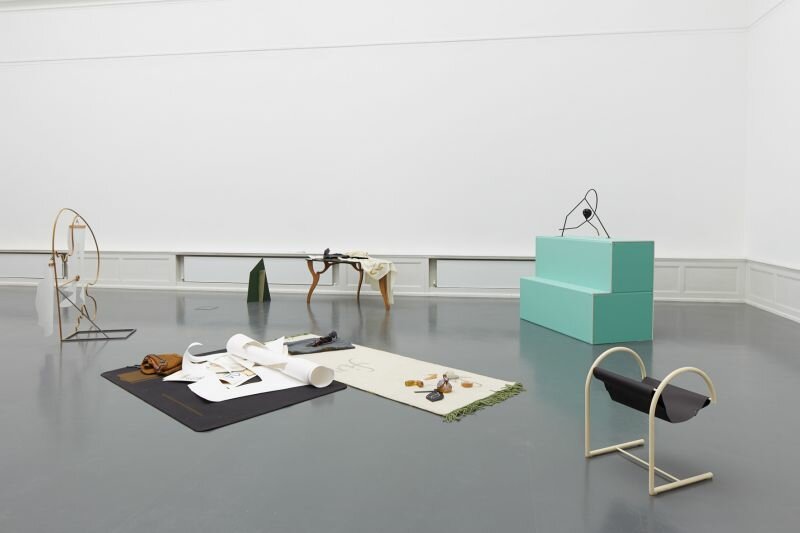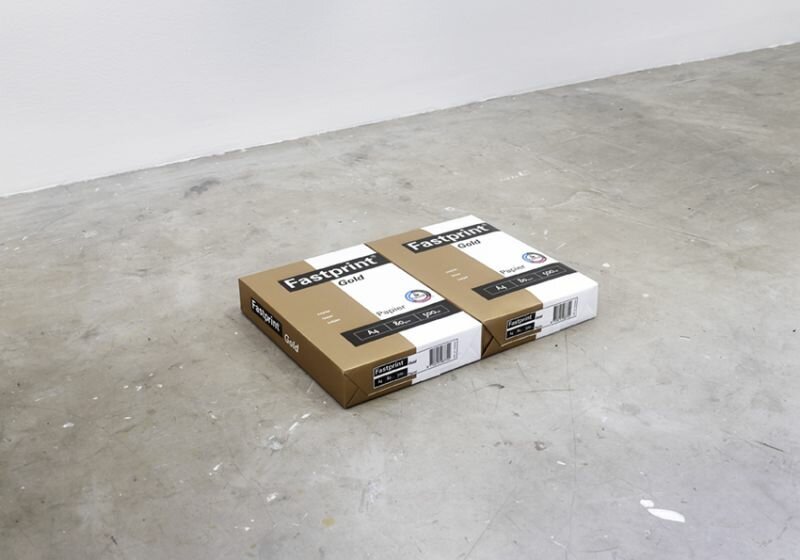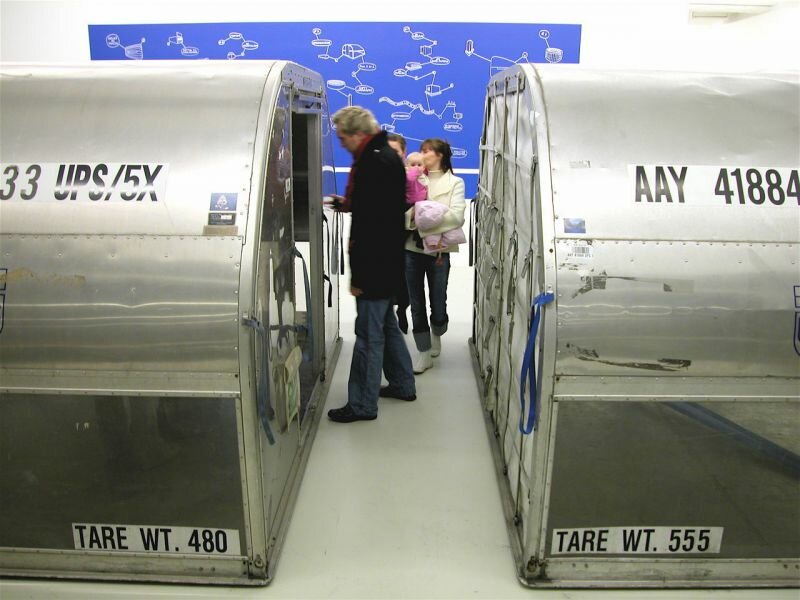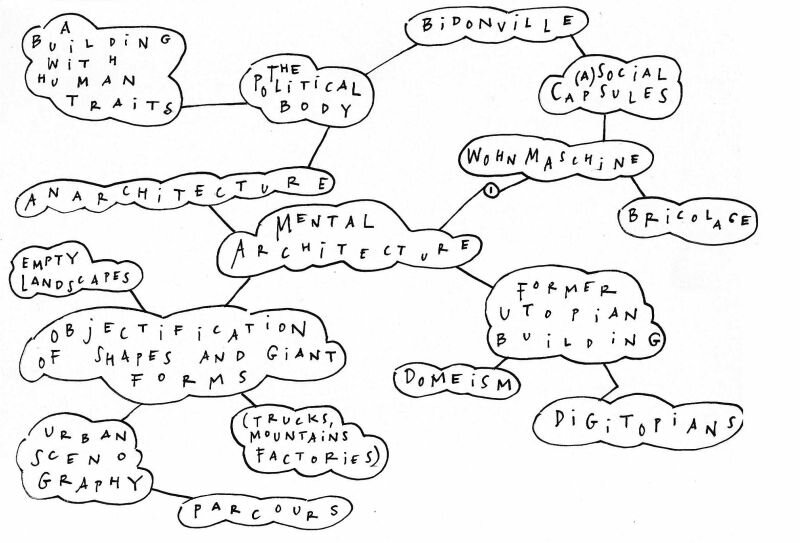One of the greatest clichés of the art academy is that we’re taught how to think and look. This could almost be considered an insult to those who are newly admitted to the academy, as if they’re not yet able to think. But according to the great writer David Foster Wallace, we do have a choice in what occupies our thoughts, and how we can learn to use this choice in a constructive way. If he’s correct, we’ve learned to look at another way of thinking at the academy, as well how to see something that does not yet exist and find a form for it. In other words, this is the thought process that happens inside the studio. But when an artwork is placed within an exhibition we’re forced to begin our thought process anew. The placing of the work in a physical construction demands the gears of thought to start their churning once again.
Any space where art is presented has it’s own signature. In an ideal situation, it should act as a refuge—a habitat for the artist, the art, and the public alike. Presenting work is a contextual and relational matter. This is inherent in the agreement in which we build a set, a display of temporary nature in which works begin a dialogue with scale, atmosphere, and the significance of both the place and the other works within that space. We build new sentences.

A space speaks to us (‘It’s a place full of known and unknown unknowns,’ as Thoreau puts it. This text will restrict itself to the presentation space, because the public space conjures wholly different questions and criteria etcetera.) Is it a dead white cube, or an eloquent, stimulating white space?
Should we begin by ‘depersonalising,’ a space? In other words, to find meaning in meaninglessness, or to neutralise the space as much as possible? Space breeds hope and future: the promise of explosions of colour on a neutral canvas! In any case, an exhibition must inhabit a space by correctly analysing it; by thinking and searching transforming it into mental architecture, and subsequently the ideal habitat for a work. By doing so, each work becomes site-relevant and in turn, becomes empowered. Something from nothing. A room as a generator of energy. A measure, a guide. It requires vision to be able to interpret a space and imagine the work within it. The space must be considered as a partner: an ideal physical relationship. Similar to love, the work comes to life only when the relationship is wrought.

An ensemble of works, whether by one artist or many, creates a route within the presentation space. As the viewer walks through the space, viewing bold statements or zooming in on details, a story unfolds, or an essay is relayed. A dialogue is created between the works by their placement and the space surrounding them, and is completed by the presence of the viewer. Often, the viewer is alone, or at least needs to find their own, personal, relationship to the space so that fellow visitors might become a figure, another element to relate to. Just like an architect can only truly see his work once it’s in use, a viewer and his own subjective world of experience finalises the completion of the exhibition. Art simply does not exist without this last element. The viewer expands the significance and complexity of the works: in a similar way that the storeys of a skyscraper ultimately, when seen from a human scale, allude to imagination.

The audience uses the intentions of the works as a reference for their own findings. Through presentation we find the sole evidence of whether our intentions are visible to The Other. A text and a title offer metaphysical foundations. However, this relationship only works when the work and the written correspond. ‘Theory without practice is sterile. Practice without theory is futile,’ someone once said. I believe in tactile theory; concept must be implicit within the full picture, and not just within the A4 placed beside it. Tangible.
An exhibition touches on many matters; an explicit placing, a forceful conglomeration of works, or the meaning of silence, the experience of seeing, the logic of poetics, light and space, contextual theory, the passing of time in multimedia, but also the duration of time within motionless sculpture… In fact, and this is the beauty of it, every good exhibition includes a relevant thought on the presentation and placing of an artwork. But also: the invisible, the intangible, the non-existent, and the subdued. It can rouse an emotional response. We all seem to be afraid of this, but in fact, it’s the most beautiful of all: the emotion that is stirred within the symbiosis of theory and practice. The right thought in the right place.

There are few general statements to be made about fine art, except that her immense power is likewise her weakness. Within the contradictions that make her lies her fragility. It stands, hangs, or simply exists. Irreproducible. That’s why art has a harder time drawing a large public than cinema or music. But in essence, I find silence and inertness the greatest qualities of fine art. Dead, worthless material that can suddenly strike a chord within one person, which can explode with energy, life, and magic and incite an endless hunger for thinking and feeling. This is art’s immanent tour de fource. As soon as the newly enlightened viewer moves on, the material reverts back to lifelessness. For this reason, art needs protection. Protection that can be found in a well-constructed exhibition.
In the novel ‘The House of Leaves,’ by Mark Danielewski, a family moves to a new house. Along the way, they discover that the interior of the house is far larger than the outside. The interior keeps expanding endlessly, as though mutating, while the outside remains the same. I often think of this when I exit a good exhibition and look at the building from outside. Inside, I made a journey through dozens of hallways, rooms, colours, and ideas. The solidarity of the physical space has collapsed, but it brings new mechanisms of perception.

Thinking about how to present art is relatively new. Of course, medieval painters knew what they were doing when they painted allegoric images above the cathedral altar, but the very conscious placing of artworks as an intrinsic ensemble in a space, or the idea that art is only ‘temporary,’ are ways of thinking that have only been around since the 1950’s with the rise of the Situationists. They were the first artists that came together to reflect on concepts such as urban planning and the vague distinction between art, life, and participation. They deconstructed the society of the spectacle and introduced terms such as psycho-geography. Art became a tool with which to understand the world, and art could be anything: a newspaper or a distorted radio broadcast.
A new light was shed on culture in general, and most pertinently on the classic exhibition, because for the first time, the context of a work was given a defining importance. It was no longer just a thing in a chamber, but a means to view and alter the world. It’s these revelations and all that came as a reaction to them, that we work with and have to reinvent. Research and Destroy. From the first mega exhibitions and curators like Harald Szeeman, to where we are now; an ever expanding field where art is no longer merely something, but also somewhere.
Antwerp, December 2011
The quotes were chosen from the following books;
- David Foster Wallace, lectures
- Henri David Thoreau, ‘Walden’
- Mark Z. Danielewski, ‘The House of Leaves’, Pantheon Books, 2000
‘Art is by the Alone for the Alone’